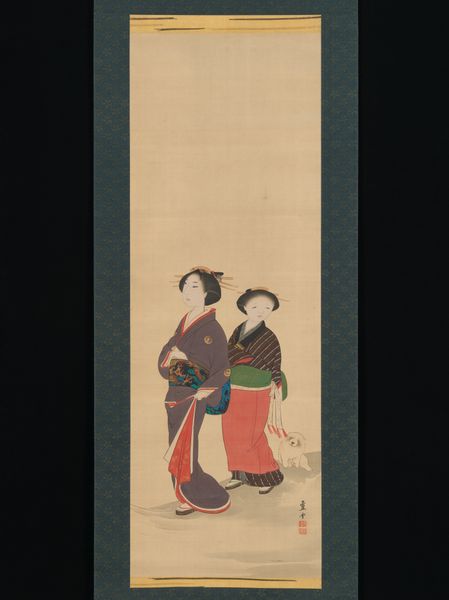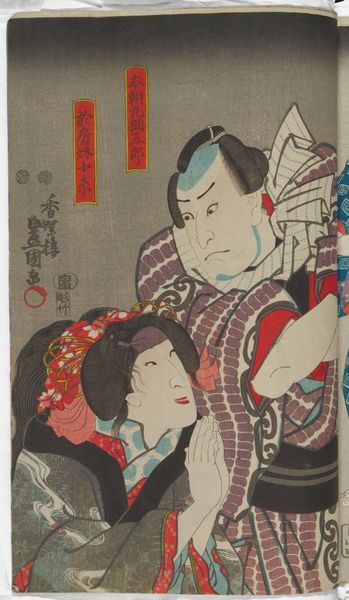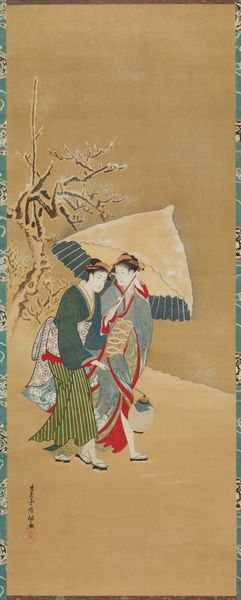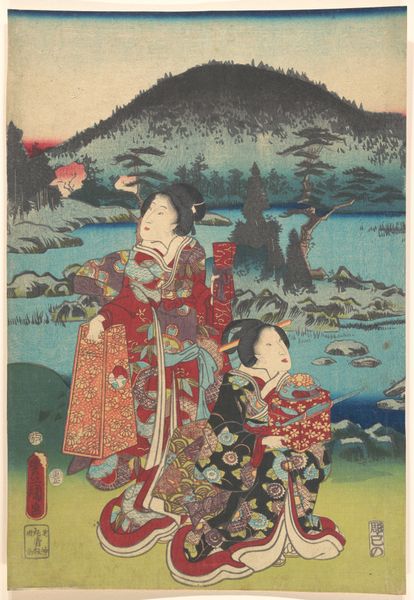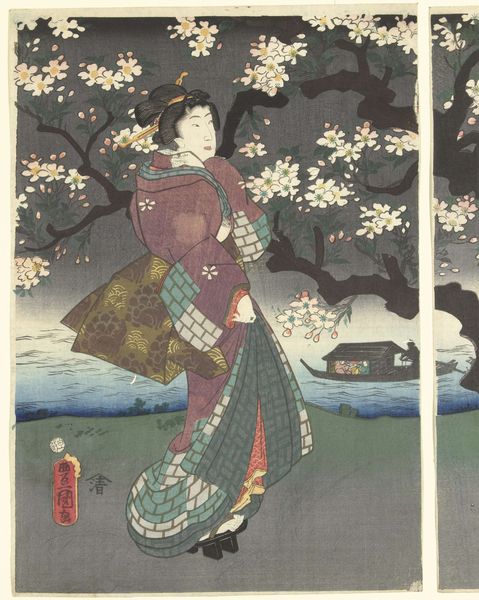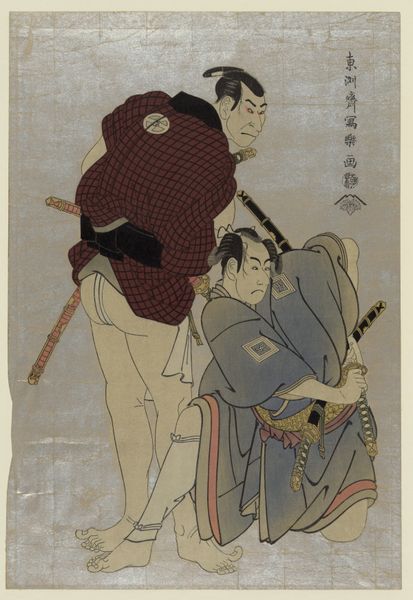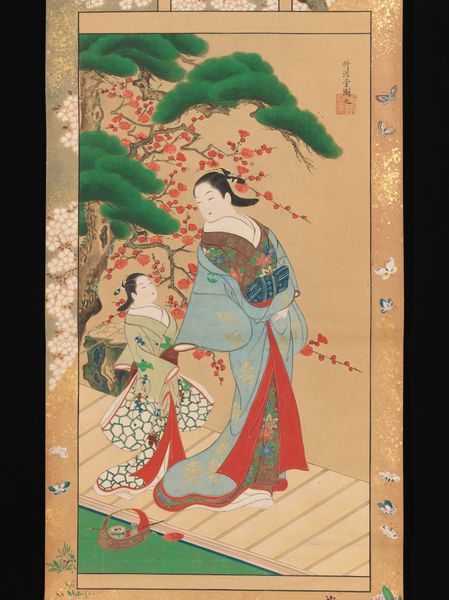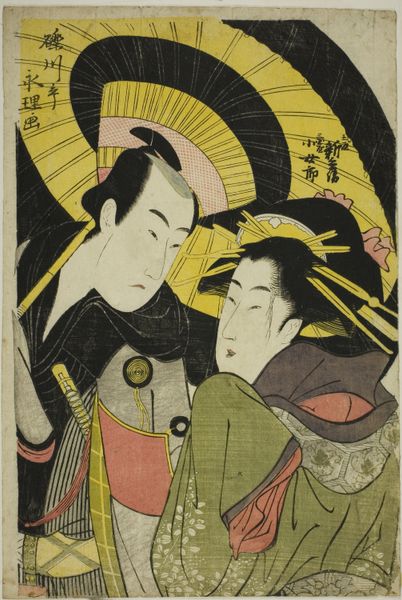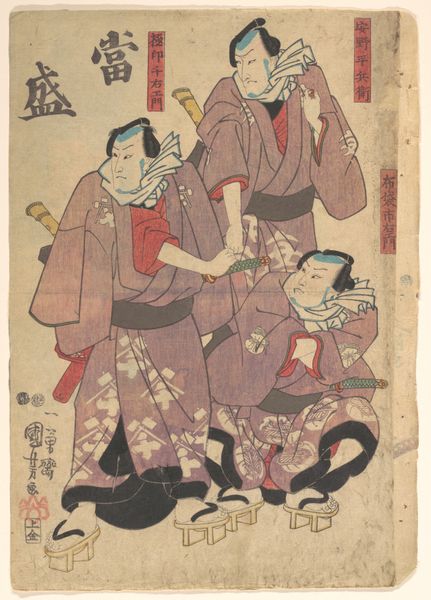
Dimensions: 9 3/16 × 9 13/16 in. (23.34 × 24.92 cm) (sheet)
Copyright: No Copyright - United States
Curator: This print, titled "No. 72", was created in 1905 by Otake Chikuha and now resides here at the Minneapolis Institute of Art. Editor: It strikes me immediately as dreamlike. The muted colors and flattened perspective create a sense of gentle unreality. There is a harmony created from its structure and balance. Curator: As a lithograph woodblock print, this work fits within the Japonisme movement, reflecting a surge of interest in Japanese art and design in the West. What can we interpret of this artistic response in 1905, toward its labor of creation, production and materiality? Editor: I see a careful study of form, echoing Ukiyo-e traditions through a decidedly modern lens, I mean look at the outlines and their gentle curves; they serve to flatten the figures. See how light reflects from these silken materials. Curator: The work engages themes of Intimism by highlighting the depiction of familial subjects. Look at their attire. The details offer a glimpse into Meiji-period societal conventions. The Kimonos' textile production surely had important roles in Japanese economies and the development of material culture in urban contexts. Editor: Perhaps, but the composition and coloring is all too elegant. Take away their meaning of class for a moment and observe the formal relationship between their forms, a dance that happens across two bodies and a balanced perspective on a serene landscape background. It appears both classical and extremely modern, to my eye. Curator: A push and pull between modernity and tradition defined not just the artwork but the whole Meiji period, creating tensions between new influences and conservative production, both intellectual and artistic, don't you agree? Editor: Absolutely, and the result here, from a structural perspective, shows how simple elements—line, color, form—when synthesized with talent and intellectual depth, are the building blocks of truly wonderful pieces of art. Curator: Yes, looking beyond just the figures we observe a bridge in Japanese print production and its effect of societal norms, material expression, and even the social interactions reflected within the printmaking itself. Editor: Indeed, and I find this to be an artwork offering unending visual harmony and stimulating composition for a very worthy print to consider from our contemporary position of knowledge.
Comments
No comments
Be the first to comment and join the conversation on the ultimate creative platform.
